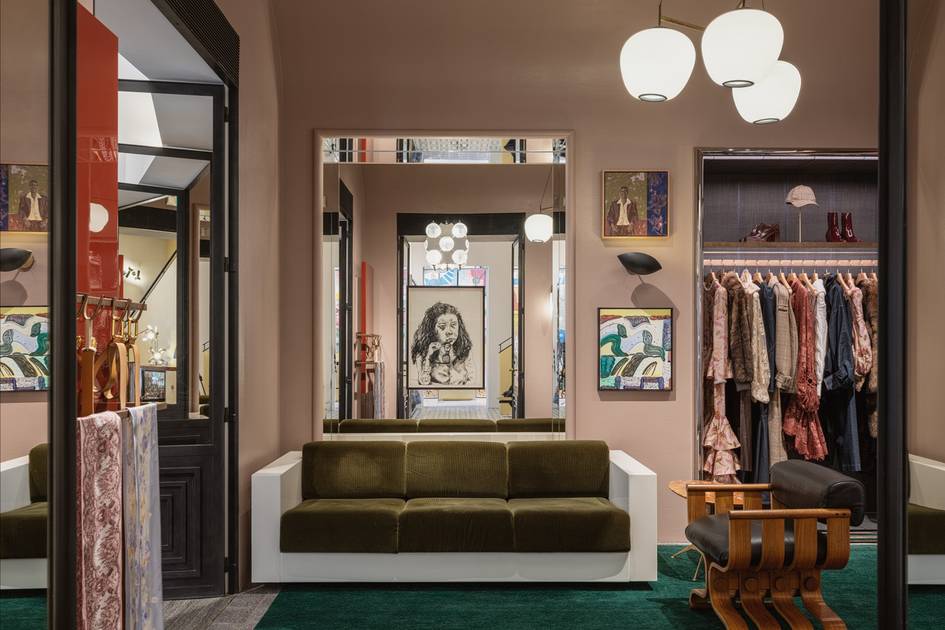On Wednesday, Primark announced that it will open its first store dedicated exclusively to its Primark Home line in March in Ireland, the company’s country of origin. This step forward in the brand’s diversification strategy consolidates an increasingly established trend among the major leaders in the fashion industry: expanding their presence into the home sector (among others).
Zara, Mango, H&M, Arket and Kiabi are just some of the names that have embraced this strategy to capitalise on the loyalty of their customer base and maximise their brand value in new segments.
But what is driving this transformation in the business models of fashion companies? What implications does it have for the industry in the long term?
- Fashion brands are expanding into sectors such as home and beauty to capitalise on customer loyalty and the growth of these markets.
- This shift is a response to the transformation of homes into epicentres of daily life following the pandemic and to the consumer’s search for integrated experiences.
- The future of fashion will be interdisciplinary, with brands diversifying their offerings and creating ecosystems that connect with the aspirations of the modern consumer.
A market with high growth potential
The expansion into sectors such as home and beauty is a response to profound changes in consumer behaviour and the global economic context. Since the pandemic, homes have transitioned from mere spaces for rest to become epicentres of daily life: offices, entertainment centres, and places of emotional connection.
This shift has driven the growth of the home décor market, which reached 749 billion dollars in 2023, with projections pointing to it exceeding one trillion dollars by 2032, according to data from an IMARC Group report which anticipcates an estimated annual growth of +4.1 percent (CAGR).
In this context, which is unfolding in an environment of inflationary economic difficulties, affordable fashion companies have a strong opportunity to conquer this segment by offering alternatives for all budgets in a design market that has historically tended to be quite exclusive.
Structural changes in the concept of the fashion brand
The beauty and personal care sector, with a particular emphasis on perfumes, has become a fundamental pillar in the strategies of luxury brands such as Chanel and Dior. These firms generate a considerable portion of their revenue through this category, which, according to the Bain & Company report on the luxury industry, grew between +3 and +5 percent in 2024.
This growth rate is comparable to that of the eyewear market, while clothing faces challenges in the face of the loss of aspirational consumers who, moreover, in an economic environment marked by uncertainty, are now looking for products that combine quality and price, especially favouring the rise of the sportswear segment.
These figures reveal a structural change in the concept of the fashion brand. Companies can no longer limit themselves to selling clothes: they need to create a comprehensive ecosystem that connects with the aspirations of the modern consumer.
Cultural brands in an interdisciplinary future
Luxury brands have been leading this transition for years, positioning themselves as cultural benchmarks beyond exclusive products. However, brands like Zara, Inditex’s flagship, have managed to democratise this approach, making it accessible to a much wider audience and significantly strengthening their market positioning.
With initiatives like Zara Beauty, the brand has followed in the footsteps of competitors like H&M, which launched H&M Beauty in 2015 to compete in the beauty sector. More recently, Zara has expanded its offering with Zara Hair, reinforcing the trend of merging fashion and beauty into a holistic experience.
This approach, combined with a carefully crafted positioning strategy in both physical stores and its online platform, positions it as a serious competitor in the affordable and aspirational segments.
Furthermore, Zara has joined the realm of experiential retail with proposals such as Zacaffè, a strategy that seeks to offer unique experiences and increase customer dwell time. This approach is reminiscent of the model of brands like Arket, which integrate additional services to enrich the consumer experience.
In this context, the future of fashion will be increasingly interdisciplinary. Zara is an example that brands that manage to diversify coherently, maintaining an emotional connection with their customers and aligning their values with those of the consumer, will be the ones with the greatest chance of remaining competitive in a constantly evolving market.
This article originally appeared on FashionUnited.ES. It was translated to English using AI and edited by Rachel Douglass..
FashionUnited uses AI language tools to speed up translating (news) articles and proofread the translations to improve the end result. This saves our human journalists time they can spend doing research and writing original articles. Articles translated with the help of AI are checked and edited by a human desk editor prior to going online. If you have questions or comments about this process email us at [email protected]







